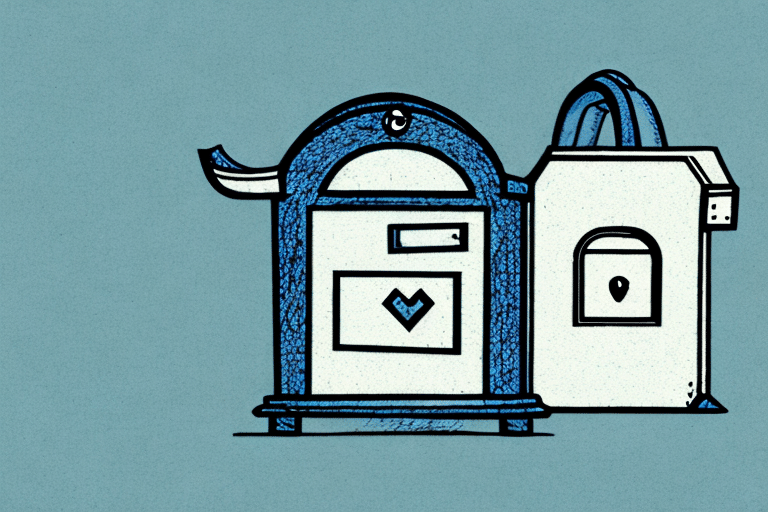Why Insure Your Mail for Maximum Protection
Sending valuable items through the mail involves inherent risks such as loss, theft, or damage. Insuring your mail provides financial protection, ensuring that you are reimbursed in case anything goes wrong during transit. For instance, if a valuable item you send gets lost or stolen, insurance coverage can help you recover the item's value, preventing significant financial loss.
Moreover, having mail insurance can offer peace of mind, especially when shipping high-value or fragile items. According to the United States Postal Service (USPS), millions of packages are shipped annually, and a small percentage may encounter issues during delivery. Insurance ensures that even in such rare cases, you are not left bearing the full burden of loss.
Understanding the Risks of Mail Delivery
Mail delivery is not always guaranteed to be smooth. Several factors can contribute to the risks associated with sending items through the mail:
- Theft: Packages left unattended at delivery locations, such as porches or mailboxes, are susceptible to theft. During peak seasons like holidays, the risk increases due to the higher volume of deliveries.
- Damage: Packages can be mishandled during transit, leading to damaged contents. Exposure to extreme temperatures or rough handling can compromise the integrity of the items being shipped.
- Loss: There is always a possibility that a package may get lost in transit, especially if proper tracking measures are not in place.
To mitigate these risks, it is essential to choose reliable shipping methods, use high-quality packaging materials, and consider additional security measures such as requiring a signature upon delivery.
Types of Mail Insurance Policies
Different insurance policies cater to varying needs based on the value and nature of the items being shipped. Understanding the types of available policies can help you make an informed decision:
- Parcel Insurance: Covers standard packages and parcels against loss, theft, or damage. Suitable for most everyday mail shipments.
- Registered Mail Insurance: Offers enhanced security and tracking for valuable items. This type of insurance typically includes a chain of custody records.
- Courier Insurance: Provides coverage for items delivered by courier services, often including expedited shipping options and additional handling care.
Each policy varies in terms of coverage limits, premiums, and specific conditions. It's crucial to review the terms and select a policy that aligns with the value and sensitivity of your mailed items.
Choosing and Comparing Insurance Providers
Selecting the right insurance provider is vital to ensure that your claims are handled efficiently and that you receive fair compensation in the event of a loss. Here are key factors to consider when choosing an insurance provider:
- Reputation: Opt for providers with positive reviews and a history of reliable claims processing. Organizations like the Better Business Bureau (BBB) can offer insights into a provider’s reputation.
- Coverage Options: Compare the scope of coverage, including what is covered and any exclusions. Some providers may offer specialized coverage for high-value items.
- Premiums and Deductibles: Assess the cost of premiums relative to the coverage provided. Additionally, consider the deductible amount you would need to pay out-of-pocket when filing a claim.
- Customer Service: Effective and responsive customer service can make the claims process smoother and less stressful.
Websites like Insurance.com and Policygenius offer comparison tools to help you evaluate different insurance providers based on these criteria.
The Claims Process Explained
Filing an insurance claim involves several steps to ensure that your loss is properly documented and compensated:
- Report the Incident: Notify your insurance provider as soon as you realize that your package has been lost, stolen, or damaged. Prompt reporting can expedite the claims process.
- Provide Documentation: Submit necessary documents such as receipts, proof of the item's value, and any tracking information. Photographs of damaged items can also support your claim.
- Claim Assessment: The insurance provider will review the submitted information to assess the validity of the claim. This may involve investigating the circumstances surrounding the loss or damage.
- Compensation: If the claim is approved, you will receive reimbursement based on the terms of your policy. This could be the item's replacement cost or its insured value.
Understanding the claims process ahead of time can help you navigate it more effectively if the need arises.
Packaging and Labeling Best Practices
Proper packaging and labeling are critical to minimizing the risks of loss or damage during transit:
- Use Sturdy Materials: Select high-quality boxes that can withstand handling. Reinforce edges and seams with packing tape to prevent the package from bursting open.
- Protect the Contents: Use cushioning materials like bubble wrap, packing peanuts, or foam inserts to protect fragile items. Ensure there is no movement within the package that could cause damage.
- Clear Labeling: Clearly print the recipient’s and sender’s addresses. Include a return address in case the package needs to be sent back.
- Include Tracking Information: Use tracking numbers provided by the shipping carrier to monitor the package’s journey and quickly identify any issues that arise during transit.
Following these best practices not only safeguards your items but also ensures that the package complies with the shipping carrier’s requirements, which can be essential for maintaining insurance coverage.
Common Mistakes to Avoid and Additional Protection Options
Avoiding common pitfalls can enhance the effectiveness of your mail insurance:
- Under-Insurance: Ensure that the coverage amount accurately reflects the value of the item being shipped. Under-insuring can leave you with insufficient compensation in case of a loss.
- Over-Shipping: Avoid over-insuring as it can lead to unnecessarily high premiums without providing additional meaningful protection.
- Ignoring Policy Terms: Always read and understand the policy terms, including exclusions and limitations, to avoid surprises when filing a claim.
Additionally, consider these extra protection options:
- Signature Required: Require a signature upon delivery to reduce the risk of theft.
- Tamper-Evident Packaging: Use packaging that shows visible signs of tampering, deterring theft and ensuring that any interference is easily detectable.
- Extended Insurance Coverage: For high-value items, look into policies that offer higher coverage limits or specialized protection features.
Implementing these strategies can significantly enhance the security and insurance coverage of your mailed items.
Determining the Value of Items Being Mailed
Accurately determining the value of the items you are mailing is essential for selecting the appropriate insurance coverage:
- Replacement Cost: Calculate how much it would cost to replace the item if it were lost or damaged.
- Market Value: Assess the current market value, especially for items that may appreciate over time, such as antiques or collectibles.
- Appraisal: For unique or irreplaceable items, consider obtaining a professional appraisal to establish a precise value.
Proper valuation ensures that you are neither under-insured nor paying for unnecessary coverage, optimizing both protection and cost-effectiveness.
Conclusion: Protecting Your Mail Through Insurance
Insuring your mail is a critical step in safeguarding your valuable items during transit. By understanding the risks involved, selecting the appropriate insurance policy, choosing a reputable provider, and following best practices in packaging and labeling, you can significantly reduce the chances of loss, theft, or damage. Additionally, being aware of the claims process and avoiding common insurance mistakes will further enhance your protection. Whether you're shipping personal items or running a business that relies on mail deliveries, investing in mail insurance is a prudent decision that offers both financial security and peace of mind.






















